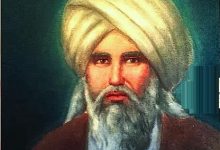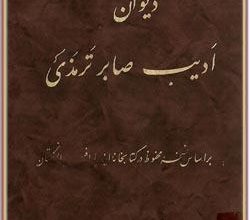About the life of Hajviri, a great scientist of the 5th century

 Harassment
HarassmentAn abstract of Hajviri's biography:
Full name: Ali bin Othman bin Ali Jalabi Hojuwiri Ghaznavi
Nickname: Data Ganj Bakhsh
Period of life: 5th century Hijri
Place of birth: Ghaznin
Name of the work: Kashf al-Mahjoob
Died: 481 and 500 AH
Burial place: between Bahati Gate Lahore
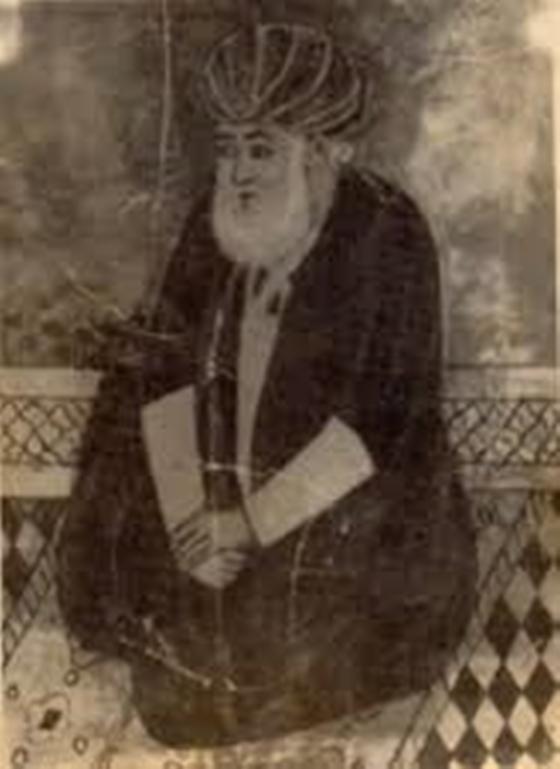 Hajviri's biography
Hajviri's biographyHajviri's biography:
The date of Hajviri's birth is not known, but according to what it seems, we believe that he was born in the last decade of the 4th century or the beginning of the 5th century, that is, during the reign of Mahmud Ghaznavi. Yaqub Charkhi reports that there was a debate between Hajwiri and an Indian philosopher in the presence of Sultan Mahmud, and Hajwiri defeated this philosopher with his dignity. Considering that Hajviri was young at this time and did not have much fame and reputation in science and mysticism, achieving this victory seemed unlikely.
Abul Hasan Ali Hajwiri of Ghaznavi was born in an ascetic and pious family in Ghaznin, it is said that there were two neighborhoods in Ghaznin, named Jalab and Hajwir, and the Hajwiri family was present in both of these neighborhoods for a while, that's why sometimes Hejvir and sometimes laxatives are introduced.
 About the life of Hajviri
About the life of HajviriHajawiri lineage:
Hajwiri does not mention his family history and ancestry, but Lahori without citing a source, extends his lineage to Imam Ali, Ismail Pasha Baghdadi in Hadiya al-Arifin calls him Hosseini, that is why in the subcontinent he is called by the name They know Seyed Ali and Seyed Hajaveeri. In one of his poems, Iqbal Lahori calls him Seyyed Hajwir and Makhdoom Umm, and in Ghazna the families who considered themselves to be from him were called Seyyed.
Among other nicknames of Hajawiri, we can mention Pir Ali and Makhdoom Ali, but he is often known as “Hazrat Datta Ganj Bakhsh” (the one who gives treasure) in India and Pakistan. It is said that Khwaja Moinuddin Chishti, in one of his poems, which is written on the occasion of the end of Cheleh night, next to Hejvir's tomb, gives him this nickname.
On the other hand, in the book Kashf al-Asrar, which is attributed to Hajawiri, people called him Ain Aflas “Ganj Bakhsh”.
Hajawiri's contemporaries:
This scientist is considered to be a contemporary of Abu Saeed Abul Khair and Abul Ghasem Qashiri. Of course, in Kashf Al-Mahjoob, they call Qashiri as a teacher and quote him directly, but it does not appear from the contents of Kashf Al-Mahjoob that he and Abu Sa'id called him Shahneshah Mohiban and Malik Al-Muluk of the Sufis. Based on what it seems, Hajawiri has only seen the children and elders after Abu Saeed.
Hjawiri's life:
Regarding the private life of Hajawiri's wife and children, no information can be found in the previous sources, only he himself mentions in Kashf Al-Mahjub that God protected him from marital conflict for 11 years, and for one year when he was involved in an emotional relationship, God still protected him. gets rid of
Since Hajawiri's statements are not correct in this regard, many possibilities have been given in this regard: some say that he got married once and for the second time even after a year, it ends with the separation or death of his wife.
Considering that Hajawiri is one of the Sufis, he was against marriage, he considered the best people to be single, so it is very likely that he was never married at all.
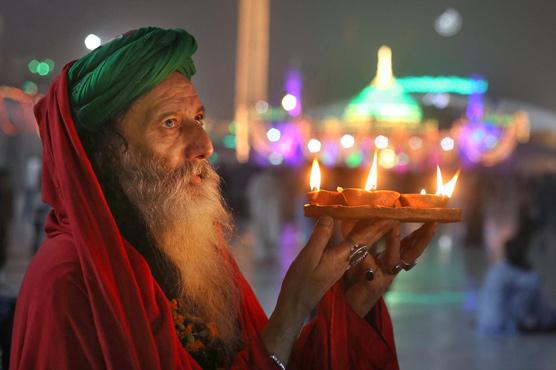 worship Fans of Hajviri in his grave
worship Fans of Hajviri in his grave Hajawiri professors:
There is not much information about Hajawiri masters and sheikhs except what is mentioned in Kashf Al-Mahjoob. It is possible that he learned the common sciences of his time such as Hadith, Tafsir, Fiqh and Kalam from the scholars of his city. In his trip to Iraq, it is said that “he was doing evil in seeking the world and its destruction” because he had taken loans from many people. Sidi wrote to him and warned him against the desires of the world. The same letter caused the need to meet Sheikh and Murshid.
Finally, among the sheikhs who met with him, Abulfazl Muhammad bin Hasan Khatli, who was called Zain Utad Sheikh Ibad by Hajawiri, was chosen as a mentor. This teacher was considered as Shabli's student in two ways.
Hajawiri's education:
Hejawiri met many mystics and sheikhs from many Islamic cities from Sham to Turkestan, from the Qazvin Sea to what is known as Pakistan today, and many religious and mystical sciences and knowledge were taken from them. Among these people, we can mention Abu Jaafar Muhammad bin Misbah Saidlani, whom he met during his trip to Iraq, and some people introduce him as Hallaj.
During his trip to Nishabur, he visited Khwaja Muzaffar bin Hamdan and talked with him about death, survival and hearing. On the other hand, he learned some things from Abul Abbas Ahmed bin Muhammad Shaqani.
He met with Abulqasem Koraghani in Tus and talked to him about his inner state and secrets and sought his guidance. In Merv, he saw the followers of the Siyars and their messages and asked about their opinions in the community and in the division.
He met the son of Abu Saeed Abul Khair, Abu Muzaffar, and Hasan bin Moadeb, a disciple of Abu Saeed, in his homeland, and Hassan bin Moadeb told him the story of Abu Saeed's meeting with Abolhasan Kharqani. Finally, after these visits and a long journey, Hajwiri reached Lahore and settled there, although the exact date of Hajwiri's arrival in Lahore is still unknown, although Hajwiri served Khatli in Syria until his death. It can be said that his trip to Lahore and then Khatli's death was in 453 or 460.
On the other hand, considering that Hajwiri talks about being trapped in the land of India in the middle of Najstan due to the discovery of his hijab, some contemporary researchers say that he was captured somewhere and this was a matter of Khatli before his death. For this reason, it is said that he went to Lahore once in 431 and during the turmoil after the rule of Sultan Mahmud of Ghaznavi, which caused Hajwiri to travel from Ghazna to Lahore.
Even in another article, it is mentioned that he went to Lahore twice and was finally captured, and the second trip was after Khatli's death.
In some writings, Hajawiri is assigned to go to Lahore by order of Khatli, before him, Hossein Zanjani was assigned by Khatli to take charge of the guidance of the Tariqat in Lahore, when Hajawiri arrived there, Zanjani had passed away, but When Hossein Zanjani passed away after Hajawiri, it is possible that this report is wrong, or Hossein Zanjani is mentioned in some sources, of course, it may be someone else whose biography is not known to us.
So, based on what it seems, the exact date of Hajawiri's arrival in Lahore and the reason for this trip are not known.
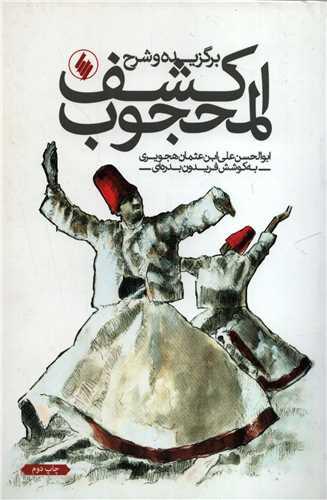 The famous book of Hajviri
The famous book of HajviriConstruction of mosque and monastery:
Hajwiri built a mosque and a monastery in Lahore, that's why he found many followers. His successors were the custodians of Hajaveiri tomb after that time.
The death of Hajviri:
Hejawiri died in Lahore. There are differences of opinion about the date of his death: some say it was 456, some say it was 464, 465. A number of contemporary researchers mention the years between 465 and 469 based on his meeting with the elders and mystics of his time.
According to the historical material written on the walls of Hajaveiri tomb, the date of his death is considered to be 465, therefore some consider this date to be acceptable.
Burial place of Hajviri:
Hejawiri was buried near the mosque he built in Lahore itself. Sheikh Ahmad Hammadi is on one side of his grave, who is considered a friend and companion of Hajwiri and is known as one of the brave mystics of that era. On the other side of him, the grave of Abu Saeed Hajawiri, a disciple of Hajawiri, is buried.
The tomb of this mystic has been restored several times and a cemetery, a well and a bathhouse have been added to its collection. A tomb in this place by Sultan Mahmud Ghaznavi's grandson; It was built by Zahir al-Dawlah Sultan Ibrahim.
Hajviri tomb has always been a place for pilgrimage and a place for mystics and Sufis to retreat.
This tomb is considered a holy place for the Muslims of the subcontinent and Pakistan, and people believe that if a person circumambulates there for 40 nights or 40 days, he will receive his needs. Every year on the day of the death of Hajwiri, the people of Pakistan hold a funeral called Ars. This celebration starts on the 20th of Safar every year and lasts for 3 days, during which there are Qawwali and Sama meetings and the conclusion of the Qur'an, speeches and sermons, people distribute food and sweets and perform circumambulation around the grave.
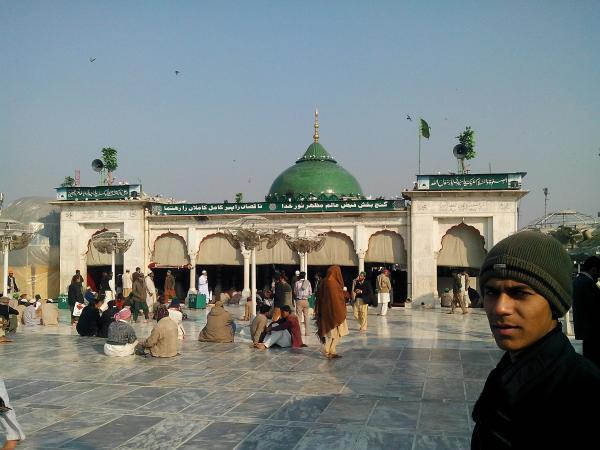 Hajviri burial place
Hajviri burial placeHajawiri's works:
One of the most reliable sources that can be attributed to this mystic is Kashf al-Mahjub. This book was written at the request of Abu Saeed Hajwayri to answer the questions.
There is no poem left that is a sign of him, but at the beginning of Kashf al-Mahjub, it is mentioned that it was forged.
The book Fana wa Baqa, which was about Sufism, but this book has also been lost.
The book of Asrab al-Kharq and Al-Mulunat. This book is also not available.
Adherence to the rights of Allah Ta'ala
The Book of Al-Bayan Lahl Al-Ayan
Minhajuddin
The manner of the heart
the faith
The difference is the difference
compilation: Cover biographical section

